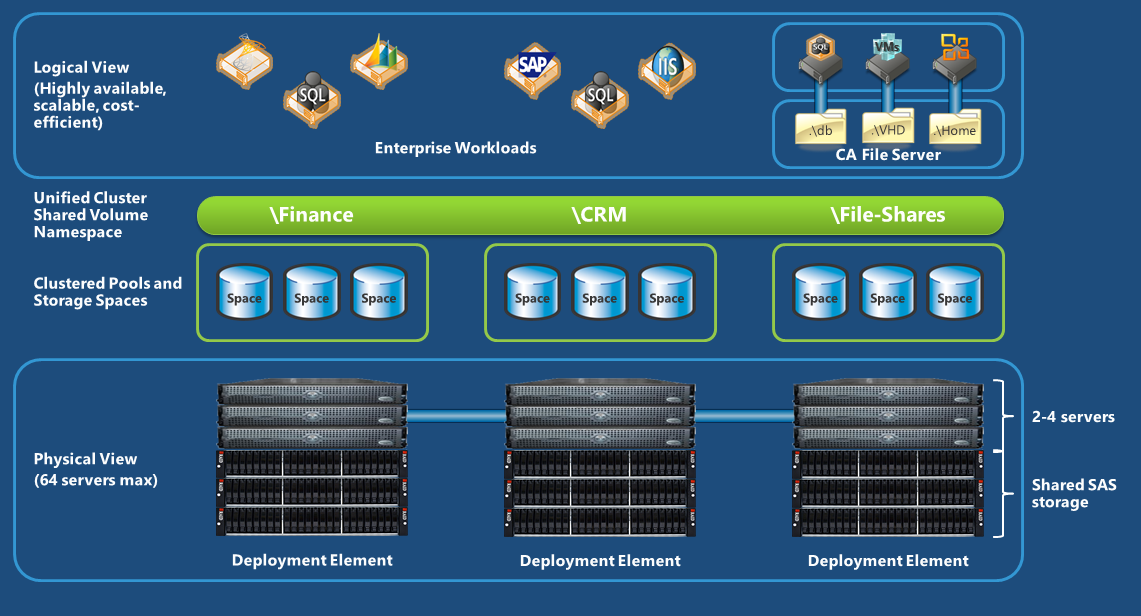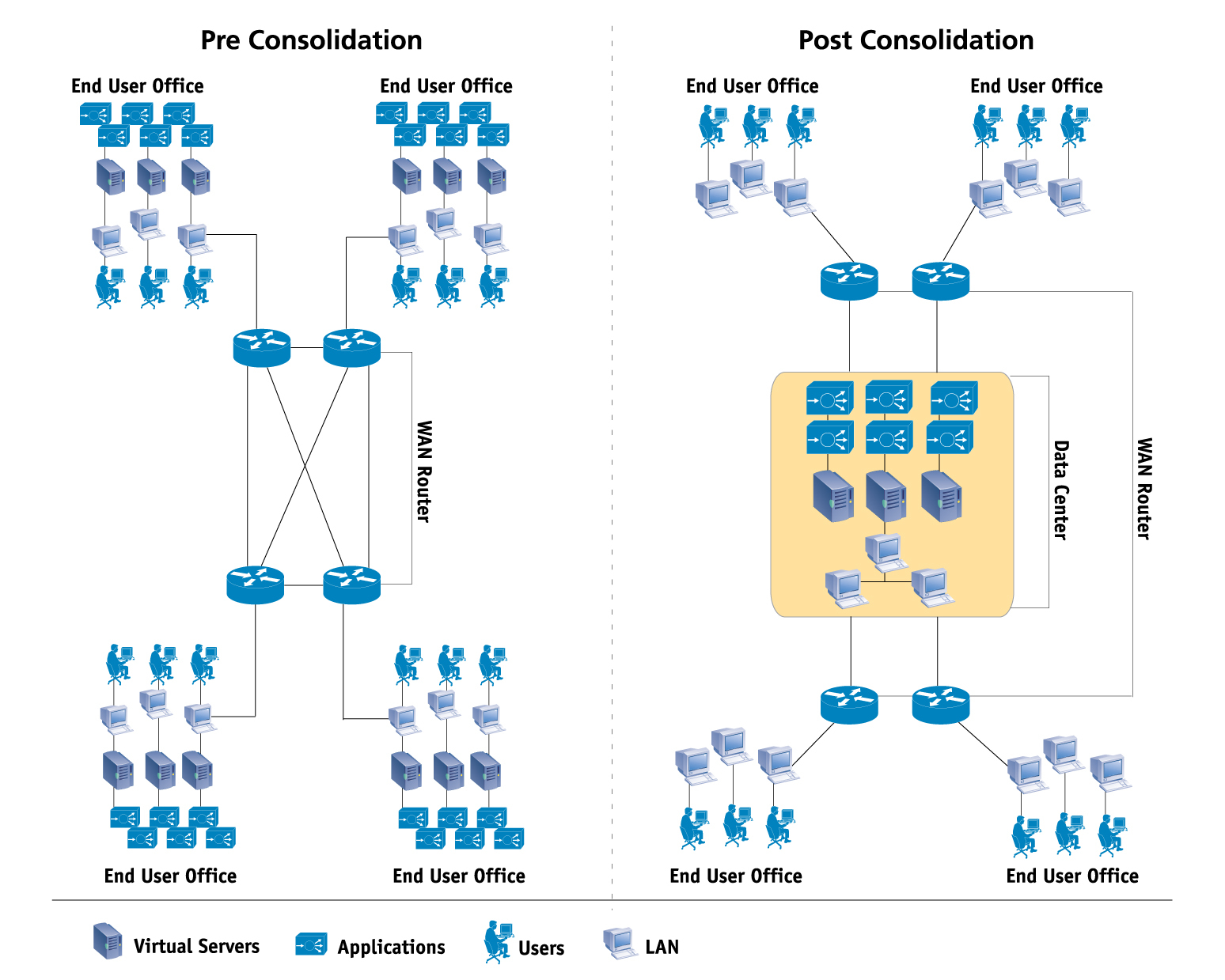Four aspects of optimizing data center performance and application performance
In any virtual environment, a very delicate balance is maintained. On the one hand, you need to be sure that the capacity of the infrastructure is sufficient to meet the requirements of the applications without compromising the overall performance. On the other hand, I want to avoid excessive reserve capacity, because it leads to inefficient use of resources and, consequently, waste of money.

The right balance is the “desired state” in the opinion of VMTurbo, a virtualization management solution provider company that recently introduced a new Operations Manager 4.0 application. Their software uses economic data to allocate virtual machines to resources. These can be resources in the datacenter, in the private cloud, or even resources in popular cloud solutions, such as Amazon or Azure.
')
These guys know a couple of ways to make applications run better and increase the efficiency of the infrastructure, so you should listen to them. VMTurbo describes 4 key aspects in achieving such a desired balance.
Workflows consume cluster resources, such as CPU time, memory, incoming / outgoing channel, and the amount of resources consumed changes with time. The simple planning mechanisms that Microsoft, VMware, and the like offer, track usage and transfer the most resource-intensive tasks to the least used machines, which helps to balance the load distribution across the cluster.
But VMTurbo argues that a more holistic approach may be more effective in achieving the “desired state”. The company believes that by analyzing how best to place the workload in the environment, while maintaining the quality of service (preventing some processes from interfering with others while maximizing infrastructure efficiency), it is possible to achieve an efficiency increase of 20-40% compared with the built-in hypervisor scheduler.
Network software level simplified movement of virtual machines. Virtual technologies, such as vMotion and Live Migration, allow you to move running machines between clusters. VMTurbo points out that what is being overlooked is the possibility of continuous, long-term analysis of solutions for the distribution of tasks between clusters, which will bring the virtual infrastructure closer to the “desired state”.

“The intellectual distribution of workload between the clusters opens up a completely new opportunity to more efficiently fill the underloaded islands of computing resources,” the company said. “This will not only contribute to more efficient use of resources by eliminating the need to reserve them for peak loads in clusters, but also provide a protective mechanism to adapt to unexpected load jumps when applications are running.”
VMTurbo claims that many companies create their hardware infrastructure for some specific projects, and for many this leads to the emergence of small clusters that are not used to their full capacity. And the right decision would be to merge all these small clusters into larger ones.

According to the company, it is important to be able to predict the possible impact of such a consolidation in which larger resource pools are formed from the existing equipment. Releasing such unused resources will save a lot of money.
VMware and Hyper-V offer a way to reserve resources for individual tasks, which ensures that resources are available to the application even when they are not needed, which helps mitigate performance problems.
This way is not quite effective, because much more resources are reserved than is really necessary. Selection of "optimal size" (calibration) of virtual servers - the ability to reserve resources based on the actual needs of each specific task. This allows you to free up a significant amount of memory and processor resources, which in turn increases the efficiency of equipment use and reduces costs, noted in VMTurbo.
What is the result of all this? Instead of trying to implement such load balancing within clusters and between them, consolidating resources and calibrating manually or using primitive tools provided by the developers of the firewalls, why not rely on specialized software?
Of course, all this looks like an advertisement, because VMTurbo is just selling software for resource allocation. But nevertheless, if the management software can increase the overall performance of the entire virtualization infrastructure by more than 40%, as the company claims, it is worth looking at this decision more closely.

The right balance is the “desired state” in the opinion of VMTurbo, a virtualization management solution provider company that recently introduced a new Operations Manager 4.0 application. Their software uses economic data to allocate virtual machines to resources. These can be resources in the datacenter, in the private cloud, or even resources in popular cloud solutions, such as Amazon or Azure.
')
These guys know a couple of ways to make applications run better and increase the efficiency of the infrastructure, so you should listen to them. VMTurbo describes 4 key aspects in achieving such a desired balance.
Smart workload placement in clusters
Workflows consume cluster resources, such as CPU time, memory, incoming / outgoing channel, and the amount of resources consumed changes with time. The simple planning mechanisms that Microsoft, VMware, and the like offer, track usage and transfer the most resource-intensive tasks to the least used machines, which helps to balance the load distribution across the cluster.
But VMTurbo argues that a more holistic approach may be more effective in achieving the “desired state”. The company believes that by analyzing how best to place the workload in the environment, while maintaining the quality of service (preventing some processes from interfering with others while maximizing infrastructure efficiency), it is possible to achieve an efficiency increase of 20-40% compared with the built-in hypervisor scheduler.
Reasonable distribution of workload across clusters
Network software level simplified movement of virtual machines. Virtual technologies, such as vMotion and Live Migration, allow you to move running machines between clusters. VMTurbo points out that what is being overlooked is the possibility of continuous, long-term analysis of solutions for the distribution of tasks between clusters, which will bring the virtual infrastructure closer to the “desired state”.

“The intellectual distribution of workload between the clusters opens up a completely new opportunity to more efficiently fill the underloaded islands of computing resources,” the company said. “This will not only contribute to more efficient use of resources by eliminating the need to reserve them for peak loads in clusters, but also provide a protective mechanism to adapt to unexpected load jumps when applications are running.”
Equipment consolidation
VMTurbo claims that many companies create their hardware infrastructure for some specific projects, and for many this leads to the emergence of small clusters that are not used to their full capacity. And the right decision would be to merge all these small clusters into larger ones.

According to the company, it is important to be able to predict the possible impact of such a consolidation in which larger resource pools are formed from the existing equipment. Releasing such unused resources will save a lot of money.
Releasing unused spare capacity
VMware and Hyper-V offer a way to reserve resources for individual tasks, which ensures that resources are available to the application even when they are not needed, which helps mitigate performance problems.
This way is not quite effective, because much more resources are reserved than is really necessary. Selection of "optimal size" (calibration) of virtual servers - the ability to reserve resources based on the actual needs of each specific task. This allows you to free up a significant amount of memory and processor resources, which in turn increases the efficiency of equipment use and reduces costs, noted in VMTurbo.
What is the result of all this? Instead of trying to implement such load balancing within clusters and between them, consolidating resources and calibrating manually or using primitive tools provided by the developers of the firewalls, why not rely on specialized software?
Of course, all this looks like an advertisement, because VMTurbo is just selling software for resource allocation. But nevertheless, if the management software can increase the overall performance of the entire virtualization infrastructure by more than 40%, as the company claims, it is worth looking at this decision more closely.
Source: https://habr.com/ru/post/234787/
All Articles